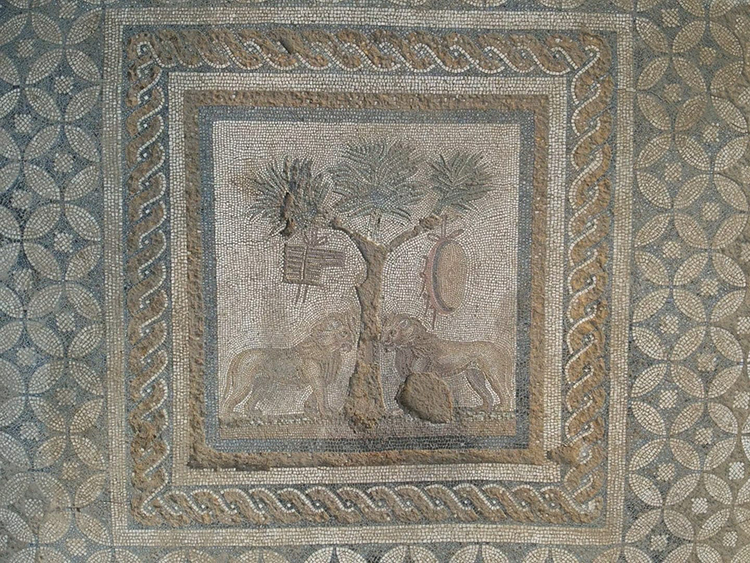A well-preserved lion mosaic discovered in the Ancient City of Prusias ad Hypium

Archaeologists found a lion mosaic during excavations carried out in the Ancient City of Prusias ad Hypium.
Excavations have been ongoing in the ancient city of Prusias ad Hypium, which is located in the Konuralp district of Düzce and is called the Ephesus of the western Black Sea.
The excavation team working in the area above the theater of the ancient city found the lion mosaic in a structure connected to the portico.
Experts believe that the newly discovered mosaic-tiled room represents a late Roman cult site (a space signifying the overall lifestyle of a society or group, encompassing specific values, beliefs, traditions, arts, and other cultural elements).
It was determined that the interior walls of the new find, whose wall dimensions are approximately 4.51×6.42 meters, were covered with marble plates on a thick layer of mortar and that the room had a rectangular plan in the north-south direction.

A platform foundation was also observed towards the north of the room. It was determined that the entire room was covered with a mosaic floor of finely crafted white, blue, yellow, green, and brown tesserae (small mosaic stones of various colors).
The mosaic, adorned with geometric patterns, features a border made of larger and more colorful tesserae arranged in a frame-like structure. In the center, within a smaller square frame made of smaller tesserae, a scene is depicted.

Experts state that the artifacts found in this room, with depictions of drums and flutes, indicate that it is a “Dionysus Cult Place”.
Düzce Governor Selçuk Aslan stated on his social media account, “During the ongoing excavations at Düzce Konuralp (Prusias ad Hypium) Ancient City, a well-preserved, rare mosaic depicting two lions looking at a pine tree with drums and a pan flute depicted on the tree branches,” he said.
Prusias ad Hypium, an ancient city located in the Konuralp District of Düzce was established on a hill that ran from east to west and ended in a plain.

In the 2nd century BC, the Bithynians, led by their king Prusias I, captured Kieros from the Mariandyns and Herekleia State. Prusias I improved the city and decorated it with many monuments. He also fortified it and changed its name to Prusias.
The city’s ancient theater, known locally as the Forty Steps, was built during the Hellenistic Age (300-30 BC) and includes additions from the Roman Period (30 BC-300 AD).